Play game
Unexplored's itch.io pageResults
| Criteria | Rank | Score* | Raw Score |
| How well the game fits the theme and goal of the jam | #1 | 4.571 | 4.571 |
| How strongly maps are integrated into the game’s design | #2 | 4.571 | 4.571 |
| How easy to understand and use the game’s rules are | #5 | 4.000 | 4.000 |
| How captivating the tone, feel and style of the game are | #13 | 3.286 | 3.286 |
| How elegant the game’s design is | #14 | 3.000 | 3.000 |
Ranked from 7 ratings. Score is adjusted from raw score by the median number of ratings per game in the jam.
Leave a comment
Log in with itch.io to leave a comment.



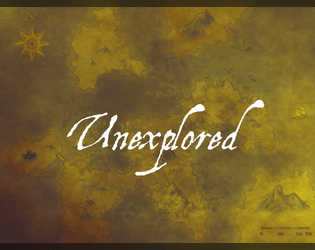
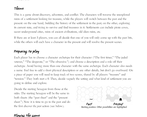
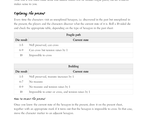
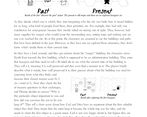
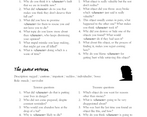
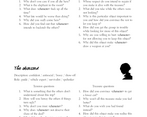
Comments
This is not a comment about the game!
Congratulations, Hardcore Narrativist! Now we need your e-mail address, please can you send an e-mail at info@mammutrpg.eu ?
hi - I really like how this game will leave you with two generated maps, and a mystery to solve in how then turned into now. (Maybe in play or maybe in fan fiction afterwards.) I like the treasure/tension questions too, I think that's where interesting things will emerge from. Maybe also where expansions could come in, you could have more romantic or horror-related questions.
I've read the comments below where you're talking about neutral versus setting-y thoughts, and it reminded me of Annalise, where the setting-neutral vampire rules is accompanied by sidebars showing two example games playing out. For that game it shows how the rules work in practice, like your example, but also that it fits in different genres. It would have messed up your word count to do that here, of course!
I'm glad the example was there; early on I was confused about whether the fragile paths are crossing the edge our group has reached, or going across the cell we're looking at. (It was the part about forks in fragile routes that started my muddle, I think; should I just be reading it that three fragile-path hexagons around a common corner could have paths into each other?)
Your example, though, doesn't give an example of the epilogues. I'd have liked to have seen that.
I had a thought about 'advanced' questions while reading over - things you could only ask once the relevant scale was over 8, or something - that I've not managed to formulate into a sentence. Not much time before comments close though, so I might not. But something like Trophy, where once you're Ruined enough you can try to decrease your score on that scale. But then I'd be changing the balance between discovering and doing you've set up here. There's not really a question or a comment realised in this paragraph, I'm just gesturing at an area.
Thanks for making the game, I enjoyed reading it.
Thanks for your comments! You're right about the expansions and the questions. Funnily enough, initially this game was sort of inspired by Uncharted, the videogame series... but the questions give it a very different feel (the videogame is more adventure/fun, and this game is much more tense and about conflict). I should probably try to develop a couple of alternative questions, or maybe whole alternative archetypes. And it's interesting that you mention horror, because the other idea I had for this jam was a kind of Silent Hill, in which the two maps represent real world and nightmare world. So maybe I can combine that idea somehow into this game?
Ah, my bad about the fragile routes. Yes, I meant that I initially said that every fragile path hexagon had to connect two sides of it, but if you had a cluster of three fragile route hexagons, it would make sense to allow people to make a fork on the road, if they wanted to. I'll try to clarify that in later versions.
Yeah, I guess more information about the epilogue would be good. I'll try to improve that, thanks!
Oh, that idea about advanced questions is interesting. I'll think about it and see if I can improve the game in that direction.
Thanks a lot, again, for your thoughtful comments!
I don’t have good English writing skills. I still hope to make myself understood in this comment.
I also leave below an Italian translation of the comment, for those who want to follow the discussion anyway.
Hi Esteban!
You’ve created a very interesting game. I really liked the idea of having the two different maps over time, especially the “character that explores in the past” rule (for 3+ players), as if in the present map the characters follow the footsteps of an ancestor.
Also great idea to include an in-depth example of the game to better explain what you mean. I solved some of the questions I wanted to ask by reading the example.
The only doubts I have are more about the usability of the maps.
Apart from these doubts that concern more the play than the game, I would say that you wrote a very good rules, clean and essential and easy to read.
Bravo!
Ciao Esteban!
Hai creato un gioco molto interessante. Mi è piaciuta molto l’idea dell’avere le due mappe diverse nel tempo, soprattutto la regola (per 3+ giocatori) del personaggio che esplora nel passato, come se nella mappa del presente i personaggi ricalcassero i passi di un antenato.
Ottima idea anche inserire un esempio approfondito di gioco per spiegare meglio cosa intendi. Alcune domande le ho risolte proprio leggendo l’esempio.
Gli unici dubbi che mi sono rimasti sono più sull’usabilità delle mappe.
A parte questi dubbi che riguardano più il giocare che il gioco, direi che hai scritto un ottimo regolamento, pulito ed essenziale e facile alla lettura.
Bravo!
Ciao Daniele! Your English is fine 😄
Thank you! Hehe, I have the impression that many questions I had about other games would have been answered by an example, that's why I always try to add one 😄
Regarding the Discover the Past table, it was on purpose: first, to make it more generic; second, to give the players more control. I think I even considered having a bit more detail and having categories like Public Building, Worship Building, and stuff like that, but I think it works better as it is now, for these reasons:
I'm not completely sure what you mean about the second point, what kind of situation do you think will be problematic? Fragile paths are drawn in the past map, and as they are explored in the present, also on the present map. When they are drawn on the present map, they might be drawn destroyed, that's why they can only be drawn on the present map once they are explored ("resolved") in the present. I don't have the impression it will be confusing, but I haven't played with other people so I don't know!
Regarding your last question, every time you move you have to roll dice at least once, because you are exploring some new hexagon so you don't know its current state (including whether or not you can even enter it!) until you roll. If you want you could move hexagon by hexagon, including "clear path" hexagons... but you have nothing to do in that case, so it's kind of an empty turn, so to speak, so I didn't even consider it. However, if you are wondering if you have to discover the past every time you move in the present, that's not the case! For two reasons:
I wonder if I should describe more explicitly what happens in a turn and what the possibilities are, do you think that would help?
Hi Esteban!
Discovery table: What I meant to expand the Discovery table was more to help players see what they found: a signed or unsigned route, a place with water, reliefs, etc… It doesn’t have to be too detailed, otherwise you’d need a much bigger table and the game doesn’t want that.
Second point: what I mean is that I see the grid of hexagons very wide (even if the one you submitted is not) and I think that players have to continuously figure out where they are because they have no other references.
To better explain: I would find it handy to have a counter on each hexagon to make direct reference from the map of the past to the map of the present.
Give more examples: Surely explaining some mechanical parts might help. I couldn’t tell you if it’s worth more in this case to increase the examples or adjust the text to make it clearer.
Thank you for your answer! Bye
Ciao Esteban!
Discovery table: quello che intendevo per espandere la tabella delle scoperte era più per indicare meglio ai giocatori cosa trovavano: una via segnata o non segnata, un luogo con dell’acqua, dei rilievi, etc… Non per forza troppo in dettaglio, altrimenti avresti bisogno di una tabella molto più grande e il gioco non vuole questo.
Second point: quello che intendo è che vedo la griglia di esagoni molto ampia (seppure quella che hai inviato non lo sia) e credo che i giocatori debbano continuamente calcolare in che punto sono perché non hanno altri riferimenti.
Per spiegare meglio: troverei comodo avere un contatore su ogni esagono per fare riferimento diretto dalla mappa del passato a quella del presente.
Dare più esempi: Sicuramente spiegare alcune parti meccaniche potrebbe aiutare. Non saprei dirti se vale più la pena in questo caso aumentare gli esempi o sistemare il testo per renderlo più chiaro.
Grazie di aver risposto! Ciao
Hey, thanks for the submission. With the big caveat that I haven’t actually played the game, just read it, here’s my review.
Theme / Maps
I liked how you approached the theme by using past and present maps. This is one idea I thought about exploring, but decided it would be too hard to implement! I think you tackled it well. I like the idea of simultaneously discovering past and present as you play. There is very clear use of maps in the mechanics.
Tone and style
I thought this game was clear and well-written, but it felt a bit dry? I feel like you have a solid theme and could go a bit further with it in the text. I suppose if you want it to be setting/genre neutral that makes it harder. That said, I really liked the character archetypes and questions. I would call attention to that content a bit earlier - I was having trouble thinking what kind of scenes and narrative would work well until I saw those questions. Those are central! Maybe introduce the actual text for them earlier on? Just an idea.
Elegant
The amount of rolling/discovery feels high, but I can see it opens up options. The one thing I'm not sure about is the Treasure or Tension rolls. It seems like mixed outcomes don’t make sense mechanically even if they do fictionally. The example on page 6 feels like it should increase tension because Carl isn’t happy, but it doesn’t. I feel like that limits the narrative. This is somewhat dealt with by the players by including it in the follow-up tension results, but still. That didn't feel quite right to me.
I also agree with @Saddy4 that some rules around scene-setting could help with that issue.
Easy to understand
I thought the game was pretty clear.
Overall, I liked it! I would like to play it. Thanks for sharing.
Thanks a lot for your comments!
Regarding tone/style, do you mean more setting-y content? If so, that's indeed on purpose because I wanted to make it setting-neutral (most of my games are). Good idea about introducing the questions earlier, you're absolutely right! They are indeed pretty central to the feel of the game, and that's not really evident until you read the whole text _and_ the questions at the very end! I even considered making extra sets of questions for a different, maybe lighter/more adventure feel... but never got around to it, didn't have enough time.
Regarding tension and such, I wonder if "tension" was a bad name. I considered "luck" but didn't want to have one increasing score and one decreasing score. I also considered "doom" but it felt maybe a bit too dark. I'm not sure it will be limiting in practice, though, as I don't think the players will feel that Carl cannot get angry only because the "tension" score hasn't increased (is that what you meant?). The idea of the tension score is to act as a time limit, so that the game isn't simply waiting until the 10th treasure and to introduce a failure condition. I had also considered counting the number of hexagon moves, or the number of explored hexagons, or whatever, but felt very awkward, very easy to lose count of, and very hard to come up with a good target number.
I'll try to find something for the scene setting, thanks!
The game is well designed and has a lot of potentials:
It has a very cools the usage of the maps, how they are generated randomly and how the generated territories give you the possibilities to choose risks and make preferred paths emerge, and it is very cool how the hexagon players are in interact with the Characters to create a story.
Still I noticed is that the game strives in the land between a board game and a roleplaying, did you think about blending more strongly in the two parts by adding to the rules a clear rule to how and when framing scenes? :)
Thanks for your comment! Unfortunately I didn't have time to playtest this so I'm not completely sure how it would work with actual people, but I have the impression that the "board game" part of it is too shallow to be interesting, so it will naturally gravitate towards figuring out what happens to the explorers.
I guess the story will be a mix of vignettes with descriptions of the places they reach, how they look, and what they find in them (aided by the generation of the settlement in the past); and the more dramatic, short scenes triggered by finding treasure and by encountering problems that raise the tension between characters. The former give context and flavour, and the latter give character development, optional roleplay/conversation, and the dramatic bits.
But again, that's what I _expect_ people will gravitate towards, I'll have to play to find out! 😄
I forgot that one of the influences for this game is The Skeletons. In it, you have a map that can change over time and you have different character archetypes with questions you can answer. The map part is not that interesting in and of itself, so the games are usually focused on answering the questions and figuring out the past lives of the skeletons, how they are related to one another, etc.
So that's similar to what I was going for, but it's hard for me to know if I have succeeded 😅
Unfortunately i don't know the game Skeletons, in need to check it out!
In Skeletons do you frame scene for answer those questions about them? :)
No, the questions are simply answered as-is, without a scene. This is the rough flow of the game:
That's pretty much it. So the questions simply flesh out who those people were before becoming cursed skeletons and it actually has little connection to the action scenes, because the skeletons are cursed and they need to guard the tomb anyway (they have no will). On paper it might sound boring or unengaging, but it's anything but! It's amazing to discover the relationships between them, and realising that some of them might have been enemies in the past, maybe even killed each other, or how they might be guarding the person who killed them all. It can get extremely dark and dramatic.
WOW! Seems very cool!
So my hint about framing scene could be nice, but not very necessary. :) i definitely need to play skeletons and your game and see how the experience feels! :D
It's a very free-form game, lots is left to the players' devices, but it's good! One thing I recommend is that one of the players controls/decides for the intruders, instead of doing it collaboratively. It flows a lot better and has resulted in much, much better games.
I'll add some notes in Unexplored about the scenes. Maybe nothing too formal, but a reminder of the things that the players can work with. Thanks!